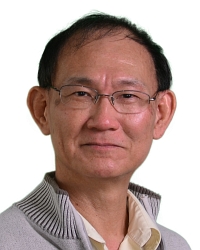TR2013-084
A Fast and Generalized Space Vector PWM Scheme and Its Application in Optimal Performance Investigation for Multilevel Inverters
-
- , "A Fast and Generalized Space Vector PWM Scheme and Its Application in Optimal Performance Investigation for Multilevel Inverters", IEEE Energy Conversion Congress and Exposition (ECCE), DOI: 10.1109/ECCE.2013.6647228, September 2013, pp. 3977-3983.BibTeX TR2013-084 PDF
- @inproceedings{Deng2013sep,
- author = {Deng, Y. and Teo, K.H. and Harley, R.G.},
- title = {A Fast and Generalized Space Vector PWM Scheme and Its Application in Optimal Performance Investigation for Multilevel Inverters},
- booktitle = {IEEE Energy Conversion Congress and Exposition (ECCE)},
- year = 2013,
- pages = {3977--3983},
- month = sep,
- doi = {10.1109/ECCE.2013.6647228},
- url = {https://www.merl.com/publications/TR2013-084}
- }
- , "A Fast and Generalized Space Vector PWM Scheme and Its Application in Optimal Performance Investigation for Multilevel Inverters", IEEE Energy Conversion Congress and Exposition (ECCE), DOI: 10.1109/ECCE.2013.6647228, September 2013, pp. 3977-3983.
-
MERL Contact:
-
Research Areas:
Abstract:
This paper introduces and develops a fast and generalized space vector pulse width modulation (SVPWM) scheme and applies the SVPWM scheme to investigate the optimal performance of multilevel inverters. Due to the development in this paper, the introduced SVPWM scheme is more efficient when the commanded reference vector is in low modulation regions. The SVPWM scheme generates all the available switching states and switching sequences based on two simple and general mappings, and calculates the duty cycles simply as for two-level SVPWM, thus independent of the level number of the inverter and providing significant flexibility for analyzing and designing multilevel inverters. Because the switching states, duty cycles, and switching sequences are all obtained by simple calculation in the SVPWM scheme, no lookup table is needed and the scheme is computationally fast. In this paper, the performance of multilevel inverters is quantitatively analyzed according to different influencing factors, such as switching frequency, level number of the inverter, modulation index, and switching pattern. Simulation results and general conclusions are given.
